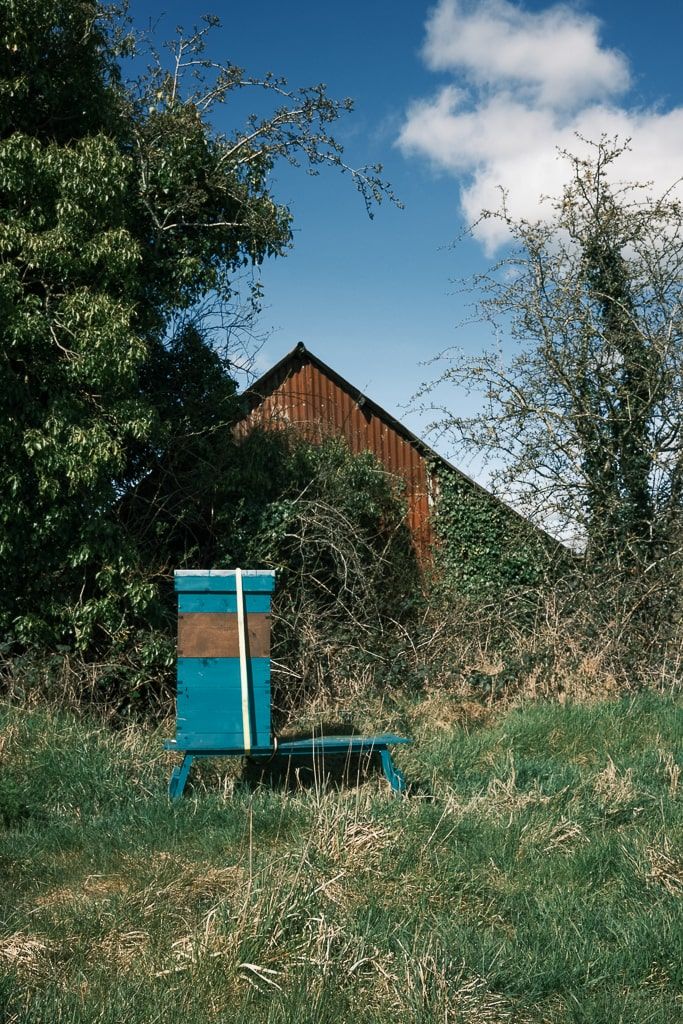Exploring a Secret Wood with the Fujifilm X100v

I set off with my Fujifilm X100V on what was intended as a four-hour walk.
The weather was perfect.
My plan was to photograph some of the sights I encounter on my running routes.
But I only got to the first hill near home.
On my way I stopped to take a picture of a telegraph pole. Hardly the most stimulating of images but I liked the way the engineers nailed the fibre broadband label to the post. The colour of the label, wood grain, and the windbush, combine to make a little piece of art.
We waited years for fibre, but that's another story.

After the excitement of the telegraph pole I entered a newly planted tree area. When I say new, it's at least ten years old.
I'd been a number of times and I know the owners. The walk takes you down into the valley between our road and the one parallel on the next ridge. The area is small compared to American standards, in fact it's tiny compared to anyone's standards. But it's a lovely peaceful area to meander and enjoy nature.
What I hadn't anticipated was meandering for a couple of hours.
I had taken a route following the cut grass track and before I came to barbed wire fence with a big enough gap for me to get under.
Ah ha! Another area to explore.
I loved what I found.
Narrow waterways, the drainage ditches for the surrounding fields, old derelict cottages, outhouses, and beehives.
The area was covered with reed-beds and wild plants. I was astounded such a nature reserve was a ten-minute walk from my front door. It made me realise the whole area must've been covered with the same type of small narrow waterways, bullrushes, and reeds. But over the years they have become rare due to modern day farming changing the land.
I can see remnants of similar areas across the area.
I was a little nervous because I wasn't sure if I was trespassing. I knew the owners of the first piece of land but I did not know who owned the second area I explored.
I heard some voices in the distance and wondered if they were yelling to me but it turned out it was a woman giving her husband instructions on where to trim the undergrowth. They were preparing the area for a strongbow competition.
That's the bow and arrow variety, not the cider drink.
After a dozen photographs I made my way home under the barbed wire fence and followed the path to the main road. The intended walk can wait for another day but I'll return to these woods with or without a camera.




The X100V Experience
I felt comfortable with the Fujifilm X100V.
Having exposure compensation set to 'c' as on my first day with the camera meant I could make adjustments to protect the highlights on the bright day.
For the majority of shots I used the Classic Chrome film simulation for a calmer look. No recipes, just the factory simulation.
Classic Chrome suited the tranquil atmosphere of the area.
I used Classic Neg for the beehive and outhouse for the enhanced colour and tonality it offered, suiting the scene.
I also tried Monochrome to try and give the area an interesting look in the bright sunlight.
Whether it's my experience, or the limitations of shooting JPEGs, I still find a need to export images to Lightroom CC to reduce some overblown highlights or lost detail in the shadows.
Getting exposure correct firsthand in camera is a skill I need to work on.
This time around I needed the smallest of tweaks to remove the clipping shown on the histogram.
The more I use the Fujifilm X100V, the easier it becomes.
The X100V is one piece of technology I have no regrets buying.
My photography skills however need a lot more work.





